1. Start with Basic Commands

Teaching your puppy basic commands like “sit,” “stay,” and “come” is essential for building a foundation of obedience. These commands help establish boundaries and provide a structure for more advanced training later on.
2. Use Positive Reinforcement
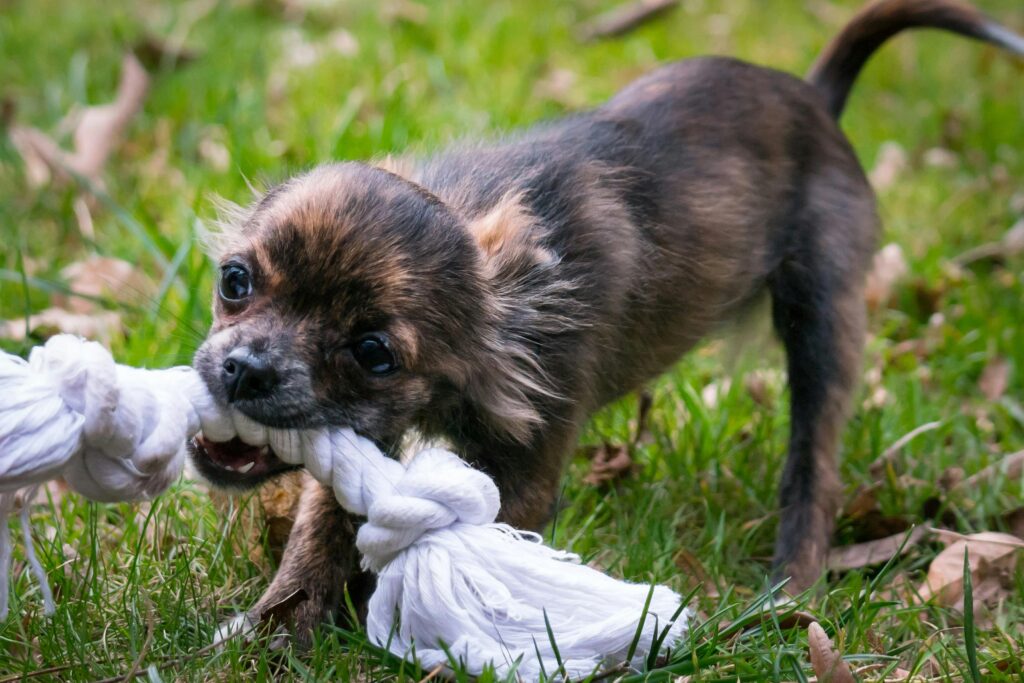
Reward your puppy with treats, praise, or playtime whenever they follow a command or demonstrate good behavior. Positive reinforcement encourages them to repeat these behaviors, making training more effective and fun.
3. Socialize Early and Often
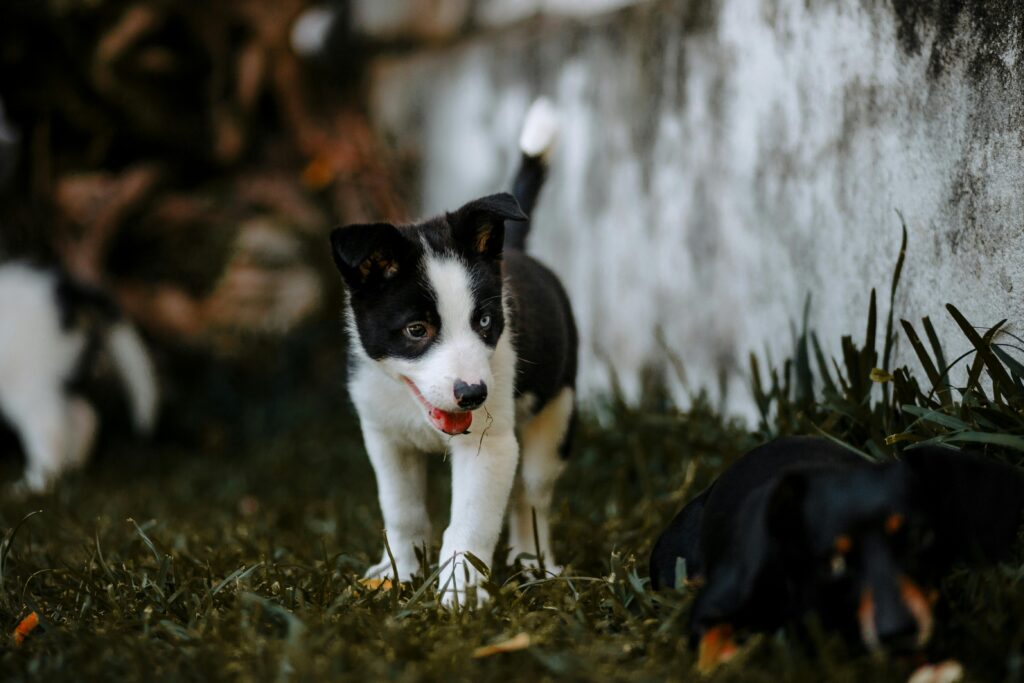
Introduce your puppy to a variety of people, pets, and environments as early as possible. Proper socialization helps prevent fear and aggression, leading to a more confident and well-adjusted dog.
4. Set a Consistent Routine
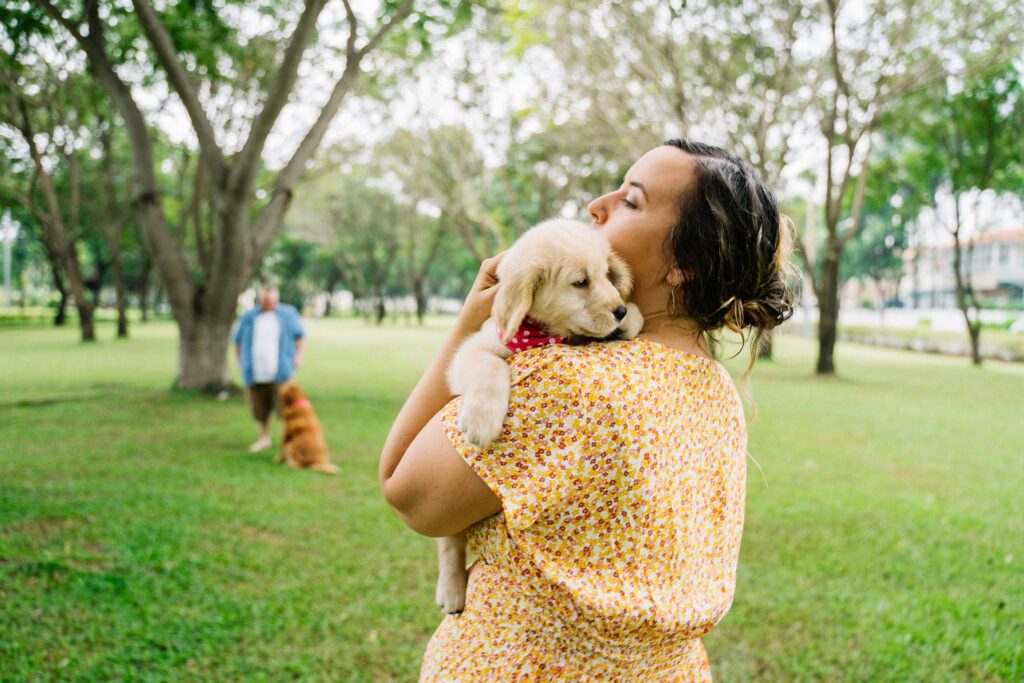
Puppies thrive on routine, so set consistent times for feeding, potty breaks, playtime, and training. A regular schedule helps them understand what to expect and reduces anxiety, making it easier for them to stay calm.
5. Crate Training for Calmness
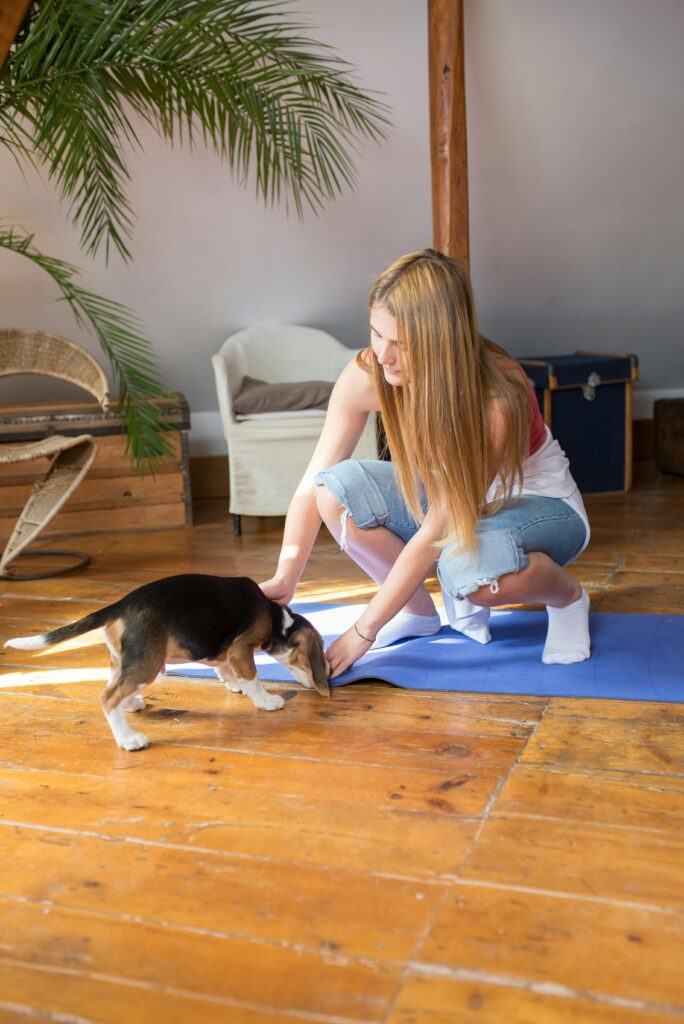
Crate training teaches your puppy that their crate is a safe space to relax and unwind. A properly trained puppy will view their crate as a cozy retreat, which helps reduce anxiety and encourages calm behavior.
6. Teach Bite Inhibition
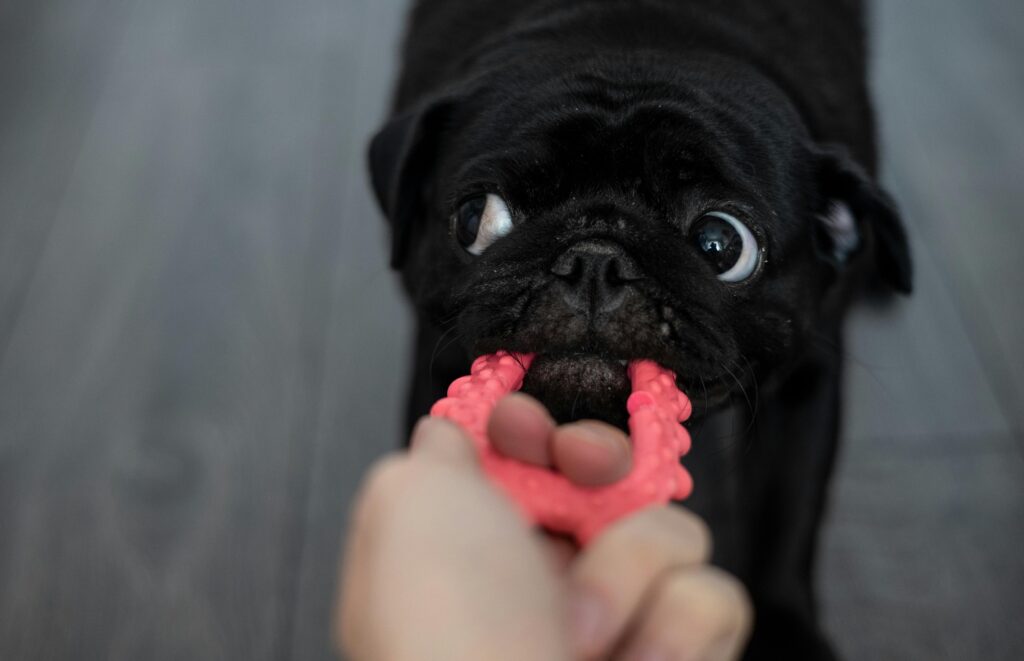
Puppies explore the world with their mouths, but it’s important to teach them bite inhibition early. If they bite too hard during play, yelp or say “ouch” to signal that it hurts, and stop playing briefly. This helps them learn to be gentle.
7. Use Short, Frequent Training Sessions
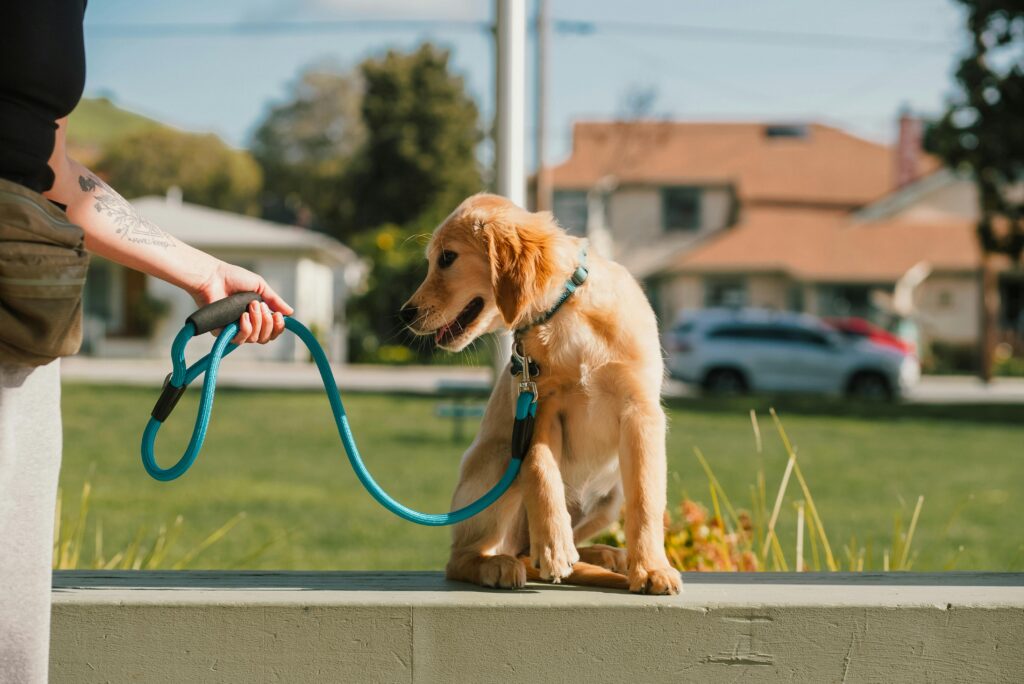
Puppies have short attention spans, so keep training sessions brief—5 to 10 minutes at a time—but consistent. Multiple short sessions throughout the day are more effective than one long session, and they keep your puppy engaged and eager to learn.
8. Redirect Unwanted Behaviors
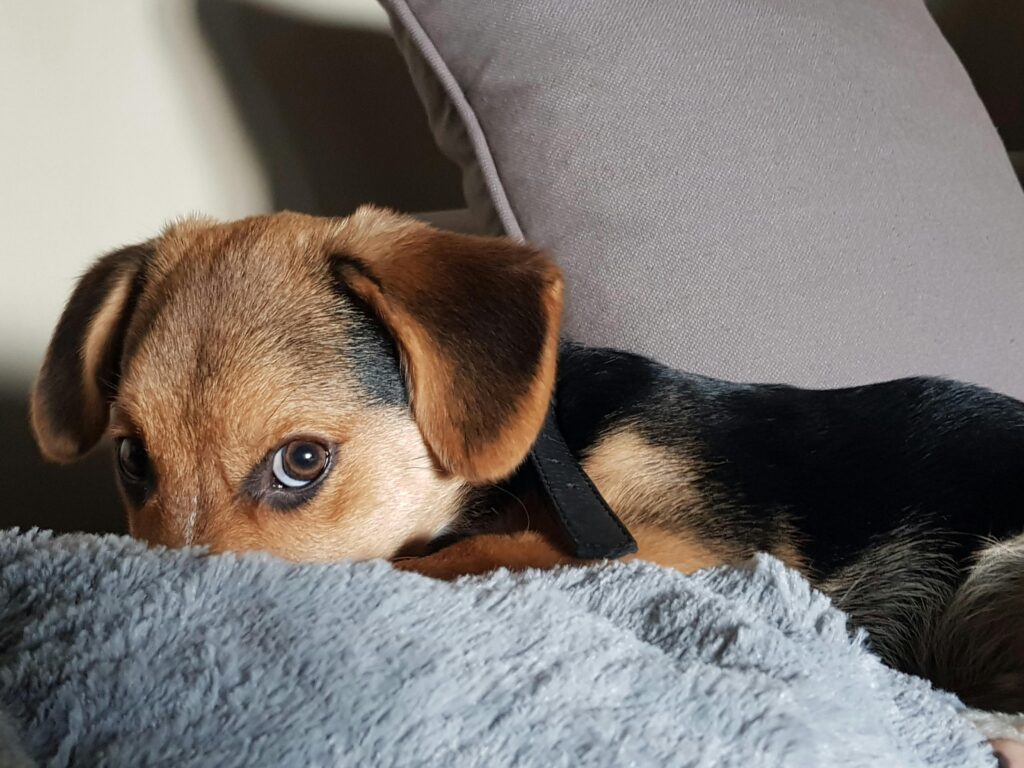
If your puppy is chewing on something they shouldn’t or barking excessively, redirect them to a more appropriate activity, such as a chew toy or a calm sit. This teaches them what’s acceptable without the need for punishment.
9. Practice Calm Exits and Entries
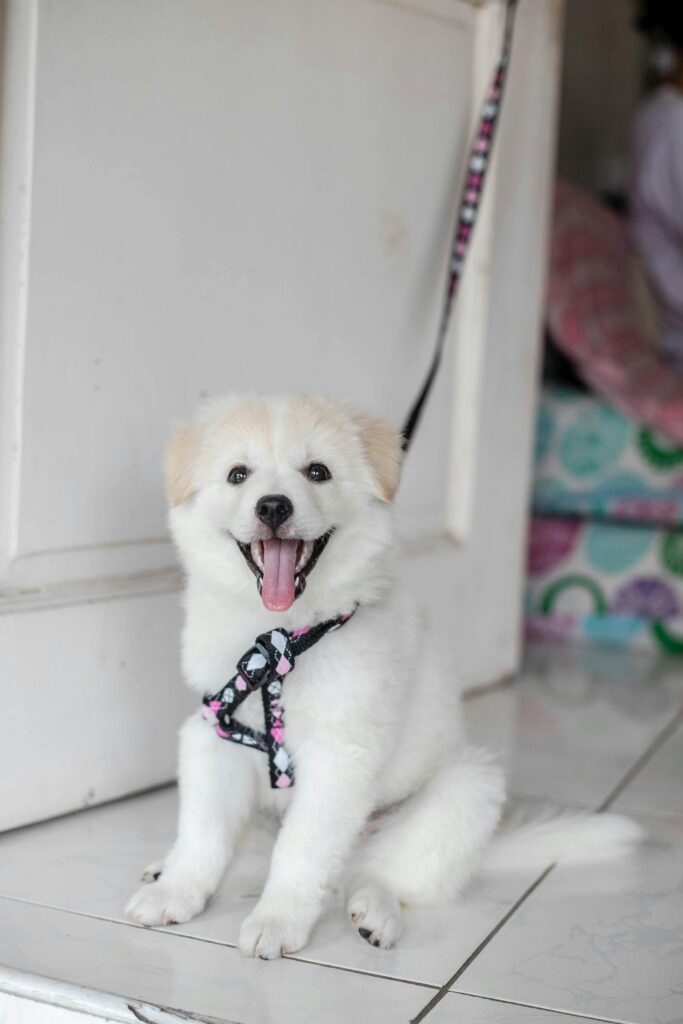
When leaving or returning home, avoid making a big fuss over your puppy. Calmly exit and enter the house without excessive greetings or goodbyes, which helps reduce separation anxiety and teaches your puppy to remain calm during transitions.
10. Leash Training for Controlled Walks
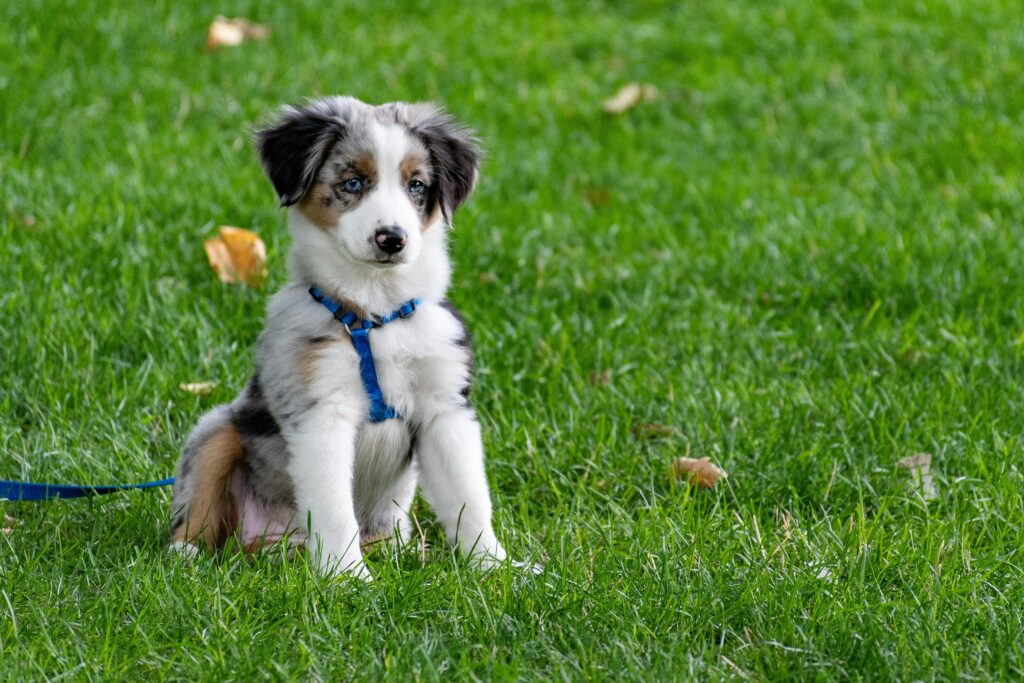
Begin leash training early to help your puppy get used to walking calmly by your side. Practice in low-distraction environments before gradually introducing more stimulating settings, rewarding them for calm, focused walking.
11. Prevent Jumping with the “Off” Command
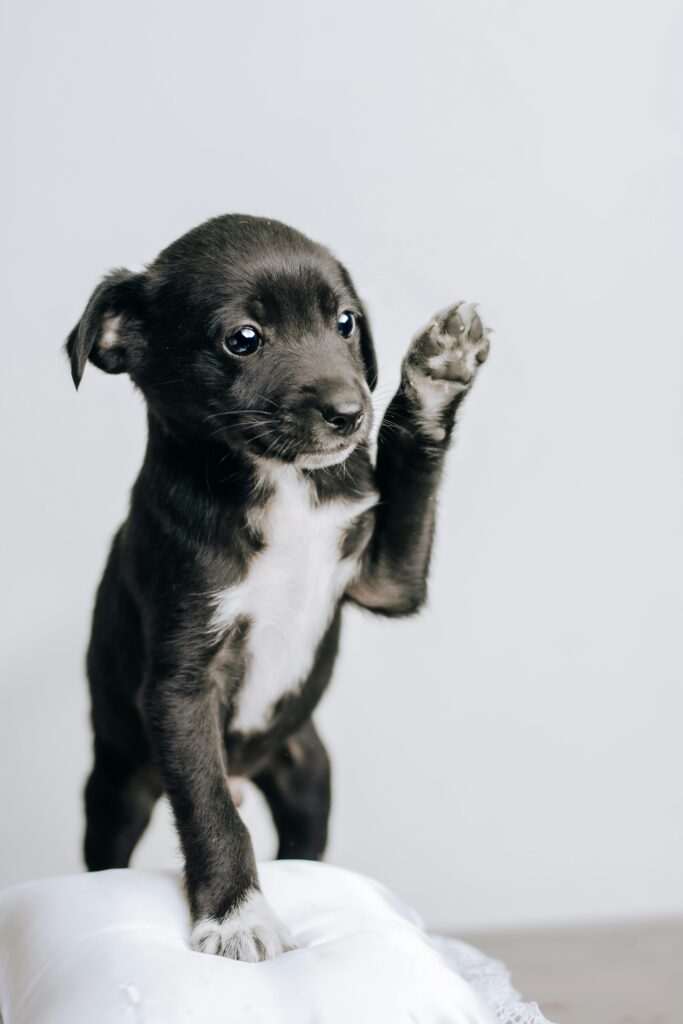
Puppies often jump on people out of excitement, but this can become a problem as they grow. Teach the “off” command by stepping back when they jump and only giving them attention when all four paws are on the ground. Reward them when they remain calm.
12. Play Calmly Indoors
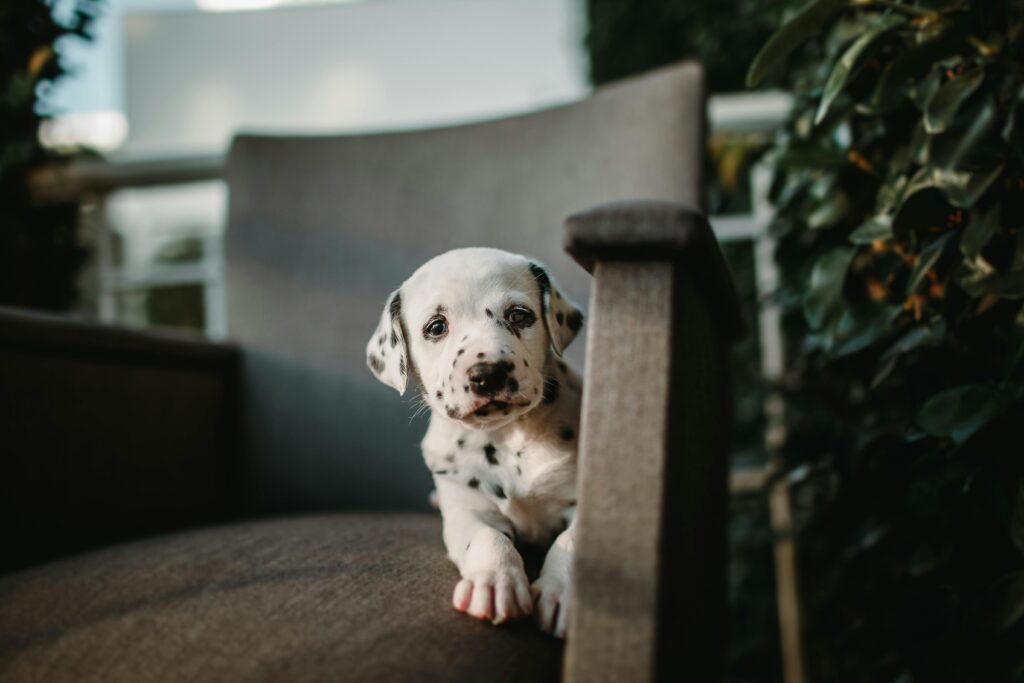
While it’s important to let your puppy burn off energy through play, teach them that indoor play should be calmer and less rough than outdoor activities. Reward them for gentle play indoors and use commands like “settle” to calm them down when needed.
13. Provide Mental Stimulation
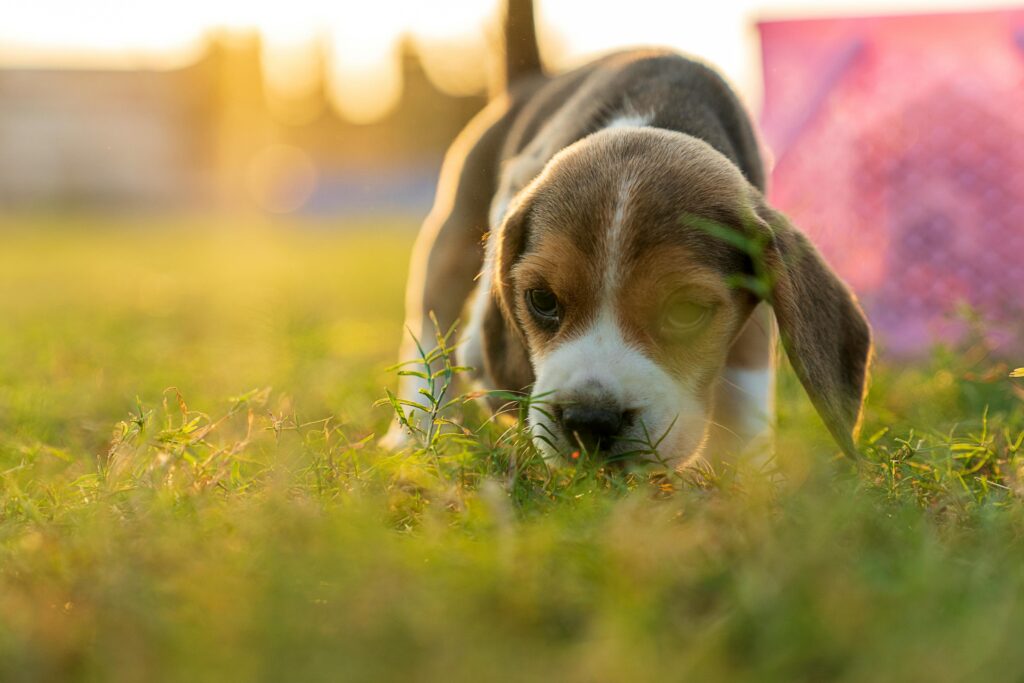
Keep your puppy’s mind active with puzzle toys, treat-dispensing games, and training exercises. Mental stimulation helps tire them out just as much as physical exercise, leading to a calmer, more content puppy.
14. Be Patient and Stay Consistent
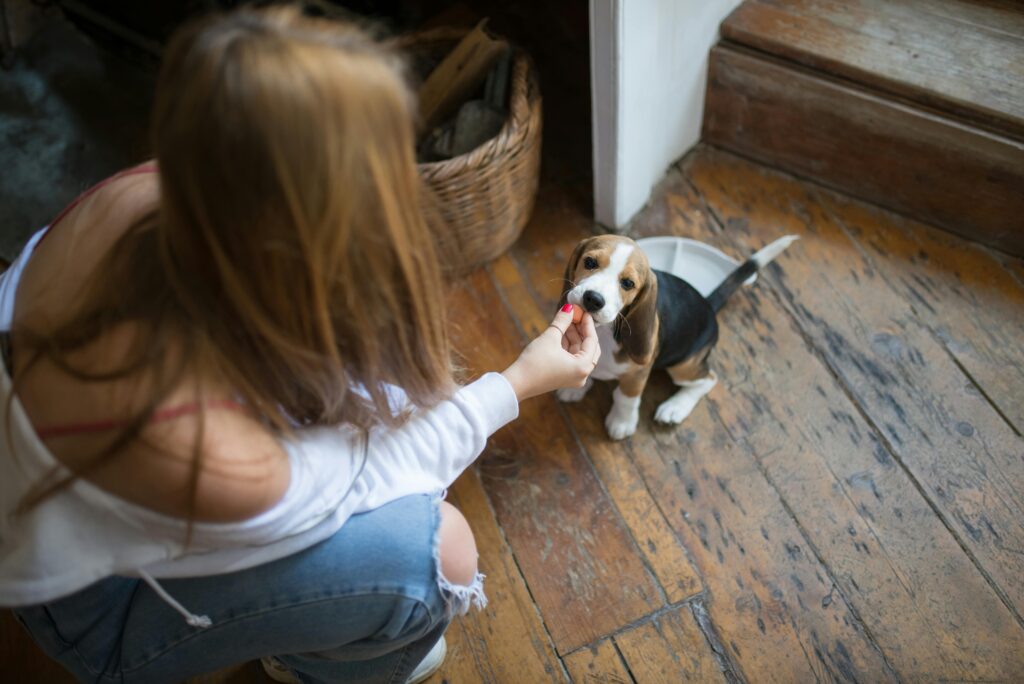
Training a calm and well-behaved puppy takes time, patience, and consistency. Stay positive, repeat lessons regularly, and remember that setbacks are normal. With consistent effort, your puppy will grow into a calm and well-behaved adult dog.


